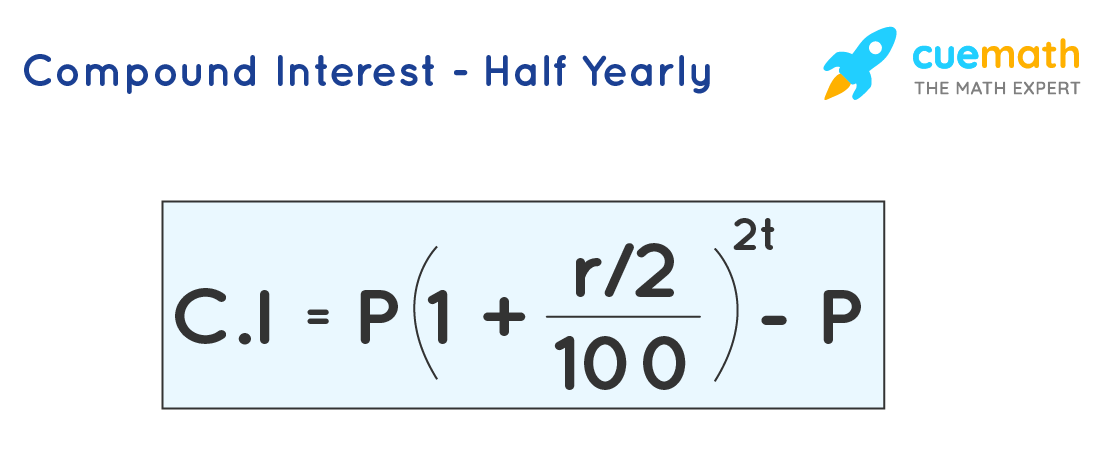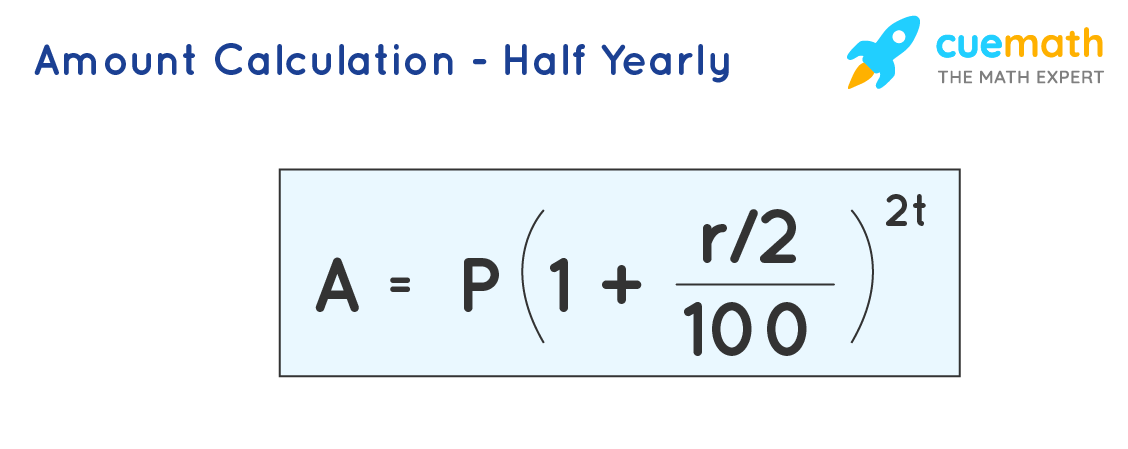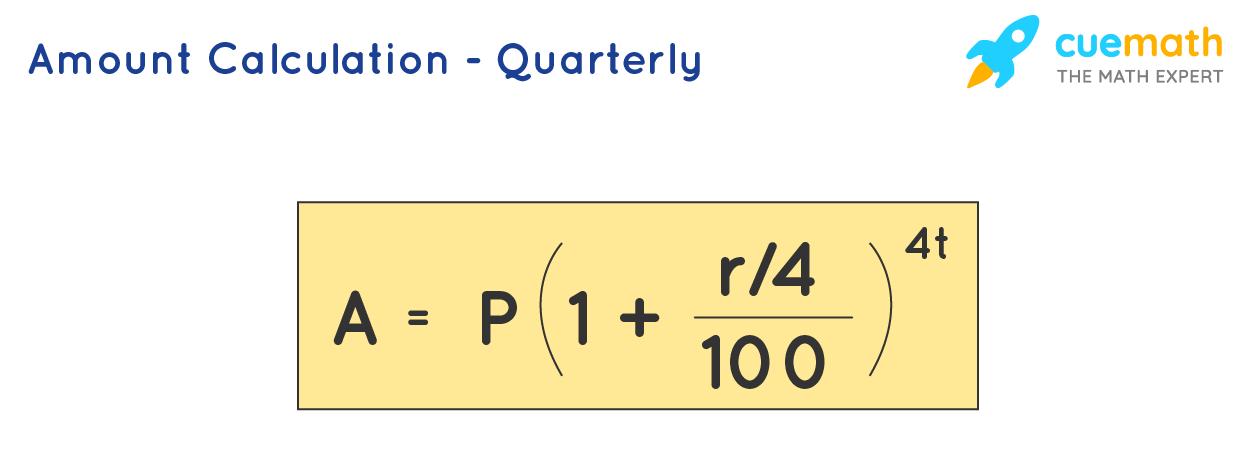How To Find Interest Earned In Compound Interest
Compound Interest
Compound interest is an interest accumulated on the principal and interest together over a given fourth dimension menses. The interest accumulated on a main over a period of time is also accounted under the master. Further, the interest calculation for the side by side time menses is on the accumulated principal value. Compound involvement is the new method of adding of involvement used for all financial and business transactions across the world. The power of compounding can easily be understood, when we detect the compound interest values accumulated across successive time periods.
A sum of money of $100 invested over a flow of time for a ten% rate would give a simple interest of $10, $x, $ten... over successive time periods of one year, but would give a compound interest of $ten, $11, $12.1, $13.31... Let u.s.a. empathize more than about this, and the calculations of compound interest in the beneath content.
Compound interest is the interest paid on both principal and involvement, compounded at regular intervals. At regular intervals, the interest so far accumulated is clubbed with the existing master corporeality and and then the interest is calculated for the new main. The new principal is equal to the sum of the Initial primary, and the interest accumulated so far.
Chemical compound Interest = Interest on Main + Compounded Interest at Regular Intervals
The compound involvement is calculated at regular intervals like annually(yearly), semi-annually, quarterly, monthly, etc; It is like, re-investing the interest income from an investment makes the money grow faster over time! It is exactly what the compound involvement does to the money. Banks or any financial organization summate the corporeality based on compound interest only.
Compound Involvement Formula
The compound interest is calculated, after calculating the full amount over a period of time, based on the charge per unit of interest, and the initial principal. For an initial chief of P, rate of involvement per annum of r, fourth dimension period t in years, frequency of the number of times the interest is compounded annually n, the formula for calculation of amount is as follows.

The above formula represents the full corporeality at the end of the fourth dimension catamenia and includes the compounded involvement and the principal. Further, nosotros can calculate the compound interest by subtracting the principal from this amount. The formula for calculating the compound interest is as follows

In the higher up expression,
- P is the principal corporeality
- r is the rate of interest(decimal)
- n is frequency or no. of times the interest is compounded annually
- t is the overall tenure.
It is to be noted that the higher up-given formula is the general formula when the principal is compounded n number of times in a yr. If the given principal is compounded annually, the corporeality after the time period at percent rate of interest, r, is given equally:
A = P(i + r/100) t , and C.I. would be: P(1 + r/100)t- P .
Derivation of Compound Interest Formula
The formula for compound interest can be derived from the formula for elementary interest. The formula for uncomplicated involvement is the production of the principal, time period, and rate of involvement (SI = ptr/100). Before looking into to derivation of the formula for compound interest, let united states sympathise the basic difference between uncomplicated interest, chemical compound interest ciphering. The master remains abiding over a period of time, for elementary internet computation, but for chemical compound interest computation the interest is added to the chief, for compound interest computation.
Derivation:
Let the master is P and the rate of interest be r. At the cease of the outset compounding catamenia, the simple interest on the primary is P × r/100. And hence, the amount is P + P × r/100 = P(i + r/100). The amount is taken equally the principal for the 2d computation period.
At the end of the second compounding menstruation, the simple interest on the principal is: P(1 + r/100) × r/100, and hence the amount is: P(1 + r/100) × r/100 + P(ane + r/100) × r/100 = P(1 + r/100)2.
Standing in this fashion for north compounding periods, the amount at the terminate of the nthcompounding period is A = P(1 + r/100)n.
From the above formulas and computations, you can observe that the compound interest is the same as unproblematic involvement for the commencement interval. But, over a period of fourth dimension, there is a remarkable deviation in returns.
The simple interest value for each of the years is the same, equally the principal on which it is calculated is constant. But the chemical compound interest is varying and increasing beyond the years. Because the principal on which the compound interest is calculated is increasing. The principal for a item twelvemonth is equal to the sum of the initial principal value, and the accumulated interest of the by years.
For instance, a sum of $x,000 is deposited at a rate of 10%. The below table explains the departure betwixt unproblematic involvement and compound involvement computation on this main:
| Unproblematic Interest Calculation (r = 10%) | Compound Interest Calculation(r = 10%) |
| For 1st twelvemonth: P = 10,000 Fourth dimension = 1 yr Involvement = grand | For 1st year: P = 10,000 Time = one year Interest = yard |
| For twond year: P = 10,000 Time = one year Interest = 1000 | For twond year: P = 11000 Time = 1 year Interest = 1100 |
| For 3rd year: P = 10,000 Time = i year Involvement = 1000 | For 3rd year: P = 12100 Time = i twelvemonth Involvement = 1210 |
| For 4th year: P = 10,000 Time = ane twelvemonth Interest = 1000 | For fourth year: P = 13310 Fourth dimension = 1 twelvemonth Interest = 1331 |
| For 5th year: P = 10,000 Time = ane year Interest = chiliad | For fiveth year: P = 14641 Time = i yr Interest = 1464.1 |
| Full Elementary Interest = 5000 | Total Compount Interest = 6105.ane |
| Total Corporeality = 1000 + 5000 = 6000 | Total Amount = 1000 + 6105.i = 7105.i |
Compound Involvement Formula for Different Time Periods
Chemical compound interest for a given principal can be calculated for unlike time periods using different formulas.
Chemical compound Interest Formula - Half Yearly
The interest in the instance of compound involvement varies based on the menses of computation. If the time flow for the adding of interest is one-half-yearly, the involvement is calculated every six months, and the amount is compounded twice a yr.
The formula to summate the compound involvement when the principal is compounded semi-annually or half-yearly is given as:

Here the compound interest is calculated for the half-yearly period, and hence the rate of interest r, is divided by 2 and the time flow is doubled. The formula to calculate the amount when the principal is compounded semi-annually or half-yearly is given by:

In the above expression,
- A is the amount at the end of the time period
- P is the initial principal value, r is the rate of interest per annum
- t is the time period
- C.I. is the compound interest.
Compound Interest Formula - Quarterly
If the time period for the calculation of interest is quarterly, the interest is calculated for every three months, and the amount is compounded 4 times a year. The formula to calculate the compound interest when the main is compounded quarterly is given as:

Hither the chemical compound interest is calculated for the quarterly fourth dimension period, and hence the rate of interest r, is divided past four and the time catamenia is quadrupled. The formula to calculate the corporeality when the principal is compounded quarterly is given by:

In the in a higher place expression,
- A is the corporeality at the end of the time menses
- P is the initial principal value, r is the rate of interest per annum
- t is the time period
- C.I. is the compound interest.
Monthly Compound Involvement Formula
The monthly compound interest formula is also known as the interest calculated per calendar month i.e., northward = 12. Total chemical compound interest is the final corporeality excluding the principal amount. The monthly compound involvement formula is expressed as:
CI = P (1 + r/12)12t - P
Daily Compound Involvement Formula
When the corporeality compounds daily, information technology means that the corporeality compounds 365 times in a year. i.e., due north = 365. The daily compound involvement formula is expressed as:
CI = P (1 + r/365)365t - P
Important Notes
- Compound interest depends on the amount accumulated at the end of the previous tenure just not on the original principal.
- Banks, insurance companies, etc. by and large levy chemical compound interest.
- If the interest is compounded quarterly, the formula of amount is given by:\begin{equation}A=P\left(ane+\frac{r / 4}{100}\correct)^{4 northward}\end{equation}
- While computing the compound interest, the rate of interest, and each time menses must be of the same elapsing.
Tips & Tricks
- The dominion of 72: It is a quick method to know how long it will have for your coin to double. Doubling Time = 72/Interest Rate
Using the rule of 72, we tin find the number of years to double your money past simply dividing 72 by the rate of interest. For instance, at an 8% compounded interest rate your money will double in 72 ÷ 8 = 9 - The time elapsing over which an interest charge per unit is applicable is referred to in many different terms.Sometimes it is called "per annum" or "annual" or "per yr". All of these mean you lot'll go the given rate of involvement over a period of 1 yr.Semi-annual is 6 months.While quarterly is 3 months duration.
go to slidego to slide

Breakup tough concepts through elementary visuals.
Math will no longer be a tough subject, specially when you understand the concepts through visualizations.
Book a Free Trial Class
FAQs on Chemical compound Involvement
How to Summate Chemical compound Interest?
The formula used to summate compound interest is CI = P( 1 + r/100)northward - P. Here in this formula the amount is calculated and then the principal is subtracted from it, to obtain the compound interest value.
What Is the Difference Between Simple and Compound Involvement?
Unproblematic interest is the interest paid only on the chief, whereas, compound interest is the involvement paid on both principal and interest compounded at regular intervals.
How to Calculate Amount Using Chemical compound Interest?
There is a direct formula for the calculation of compound interest. A = P(i + r/100)n. Hither we need to define the charge per unit of interest and the time interval at which the compound interest is calculated.
How To Calculate Amount Using Compound Interest Formula?
There is a general chemical compound involvement formula for the adding of chemical compound interest i.east.,
CI = Amount - Chief
where, Corporeality = P(1 + r/100)t. By substituting the given parameters such as P (chief amount), r (rate of interest), and t (time) corporeality tin can be hands calculated.
What Is the Monthly Compound Involvement Formula?
The monthly chemical compound interest formula is given as
CI = P(1 + (r/12) )12t- P. Where, P is the primary corporeality, r is the interest rate in decimal form, due north = 12 (it means that the corporeality compounded 12 times in a year), and t is the time.
What Is the Daily Compound Interest Formula?
The daily compound involvement formula is given as
A = P (one + r / 365)365 t, where P is the principal corporeality, r is the involvement rate of interest in decimal class, northward = 365 (it means that the corporeality compounded 365 times in a twelvemonth), and t is the time.
What Is the Future Value Compound Interest Formula?
The hereafter value compound interest formula is expressed equally FV = PV (1 + r / northward)n t. Here, PV = Present Value (Initial investment), r = charge per unit of involvement, n = number of times the corporeality is compounding, and t = time in years.
Is Interest Compounded Daily Improve than Monthly?
The interest compounded daily has 365 compounding cycles a year. It will generate more than money compared to interest compounded monthly, which has merely 12 compounding cycles per year.
What Are the Principal Disadvantages of Compound Interest?
If we miss a payment by a solar day likewise, towards the end of tenure it may incur a huge loss. The interest calculation is for the adjacent cycle and for a higher value. Chemical compound interest is actually designed to help the lenders but not the borrowers.
How Does Compound Interest Depend on Time Period?
The compound interest depends on the time interval of adding of interest. The time interval for the calculation of interest can be a mean solar day, a week, month, quarterly, half-yearly. For the shorter fourth dimension period of adding, the net accumulated chemical compound interest is higher.
How Much is Compound Involvement Greater than Simple Interest?
The compound interest can be greater than the simple involvement. The compound interest value varies and increases for successive time periods. An initial principal of $100 invested over a period of time would give a simple involvement of $10, $ten, %x... over successive fourth dimension periods of 1 year, only would give a chemical compound interest of $ten, $11, $12.ane, $thirteen.31..... Thus the compound interest is greater than the uncomplicated involvement. Only for the first yr, or for the get-go cycle of calculation, the compound interest, and the simple involvement values are equal.
Can Compound Interest exist Greater than Principal?
The compound interest can exist greater than the principal. The chemical compound interest value varies and increases for successive time periods. An initial principal of $100 invested over a period of time would requite a chemical compound involvement of $10, $11, $12.1, $thirteen.31....over successive fourth dimension periods of 1 year each. Thus the chemical compound interest increases over a catamenia of time and tin be greater than the initial principal value.
How Do you Summate Chemical compound Interest for Half Year?
The formula for calculation of chemical compound interest for half yr is CI = p(ane + {r/ii}/100)2t.- p. Here in this formula 'A' is the last corporeality, 'p' is the chief, and 't' is the fourth dimension in years. In the formula we tin find that the rate of interest is halved and the time is doubled, to account for the adding of compound interest for one-half a year.
What Is the Information Required to Calculate Compound Interest?
The adding of compound involvement requires united states of america to know the principal, rate of involvement, and the time catamenia. Besides, we need to know the time interval for which the interest is to be calculated.
What Are the Units of Compound Involvement?
The units of compound involvement are the unit of currency and are the aforementioned every bit the unit of measurement used for the principal value. If the primary is in dollars, or yen, the compound involvement would also be in dollars or yen.
How To Find Interest Earned In Compound Interest,
Source: https://www.cuemath.com/commercial-math/compound-interest/
Posted by: losoyawhavuld.blogspot.com


0 Response to "How To Find Interest Earned In Compound Interest"
Post a Comment